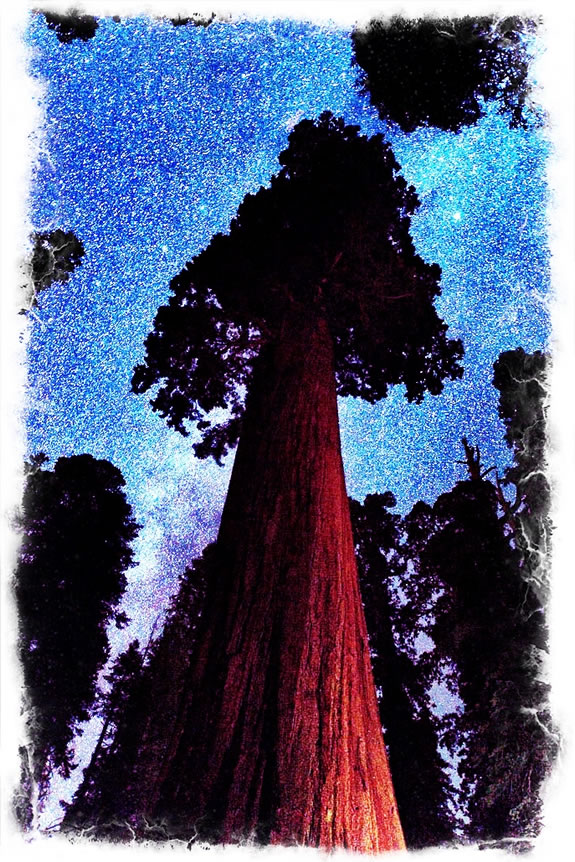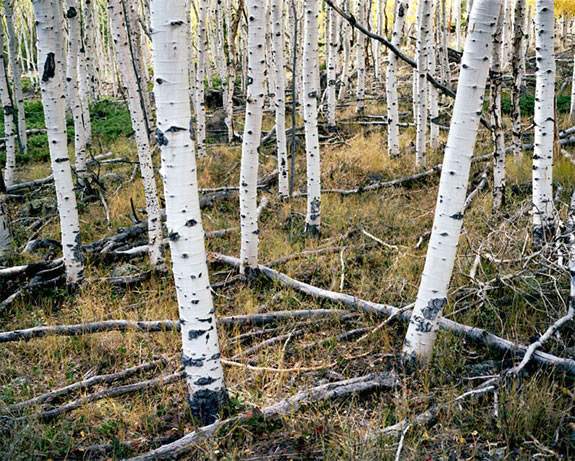
While I was walking in the woods, the ancient layers told me their stories.
[Image above by Justin Kern,
altered by Dawn Clark, AIA, LEED AP]
When I was young, in NY, my parents took me to
the New York City Museum of Natural History [AMNS.]
This was a whim reaching to a noticeable interest, on my part, in small things.
I realize, in walking the forest, that there is the bigger picture of the movement and array of the trees in the wind and mist of the deeper systemic character of those places — worlds within worlds, whorled. As a naturalist walking, you reach into the earth, further, to find ecosystem on ecosystem — you learn to savor the beauty of the big, the bigger picture — and, too, digging into the earth, the rot of old trees and forest floors, to see into the wrinkling of time.
I used to pretend I was an ant —
envisioning that very small scale of seeing things.
I’d smash my head to the ground, and with a magnifying glass, pretend that I was traveling the lawn, the bouldered field of journeying a pebble beach. I think that, ultimately, is why I was at the American Museum of Natural History — an exhibit on ants, with a curatorial leadership by Edward O. Wilson — who I’d met, in the whirl of inspirational daze, at TED. Not the first time that I’d known of him — I’d studied his writing for years, perhaps a little more scholarly than Loren Eiseley, another potent influencer, in the observation of nature. In fact, my early career as a biologist was channeling the spirit of Eiseley’s love of nature — and the watching of it. But, in the study of tiny ecosystems, it was Wilson that taught about the power of the ant, in their massive populations, explicating the mysteries of inter-relatedness. And their webbing of their influences. His thinking, on ants, can best be found here.
Have it, read it. See more, in Nova’s “Lord of the Ants.”
But, back to the ancient groves, I am fascinated now, by the sudden relevance of the old ones, trees that live for a thousand years and more. As a long hunter of old groves, stands of ancient ones, it was intriguing that this now emerged in Wired, of all places.
See, for example, the Pando grove, a colony of ancient ones.
80,000 years old, below:

The photograph above, of the Pando colony,
was taken by Rachel Sussman,
as part of The Oldest Living Things In The World project.
We’ve written a lot about trees.
There are 10 articles, the above is the 2nd in the series.
The point, to fascination, is their psychic value as a symbol for more,
a legacy that is rife in deep historical mystery, symbolism and mythology.
Notes on that, here.
Trees, heaven-holding, earth grasping —
they reach out to light and
capture any space in their foliate arrangement
to fill out, into, the gathering of light.
How might you think about the symbolism of trees,
in your life, your work, your meditations
on meaning,
which is memory and mind,
combined?
Tell me.
TIM
….
HOLISTIC WELLNESS & PLACE
THE STRATEGY OF CREATING
HEALTHY PLACES OF BEING
https://www.girvin.com/subsites/wellness
DESIGNING ENVIRONMENTS FOR HEALING + HEALTH:
PLACES | RETAIL | RESTAURANTS | SPAS | WELL CENTERS
wellness experience design, storytelling + brand = http://bit.ly/XIQ0vm